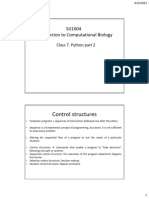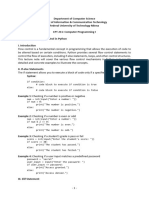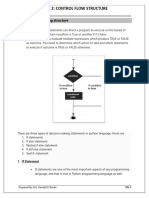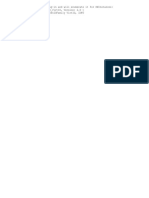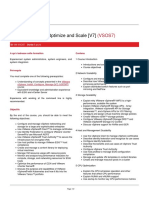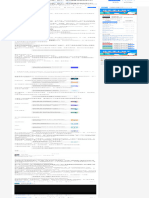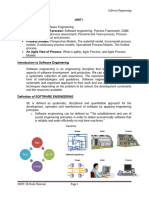0% found this document useful (0 votes)
83 views11 pagesCT8 (Q4) ControlStructure
This document outlines the learning objectives and competencies related to control structures in programming, specifically in Python. It explains the concept of control structures, including sequential, selection, and repetition types, and provides examples of each. Additionally, it includes practical exercises for students to apply their understanding through coding tasks and evaluations.
Uploaded by
danielle.tantocoCopyright
© © All Rights Reserved
We take content rights seriously. If you suspect this is your content, claim it here.
Available Formats
Download as PDF, TXT or read online on Scribd
0% found this document useful (0 votes)
83 views11 pagesCT8 (Q4) ControlStructure
This document outlines the learning objectives and competencies related to control structures in programming, specifically in Python. It explains the concept of control structures, including sequential, selection, and repetition types, and provides examples of each. Additionally, it includes practical exercises for students to apply their understanding through coding tasks and evaluations.
Uploaded by
danielle.tantocoCopyright
© © All Rights Reserved
We take content rights seriously. If you suspect this is your content, claim it here.
Available Formats
Download as PDF, TXT or read online on Scribd
/ 11







